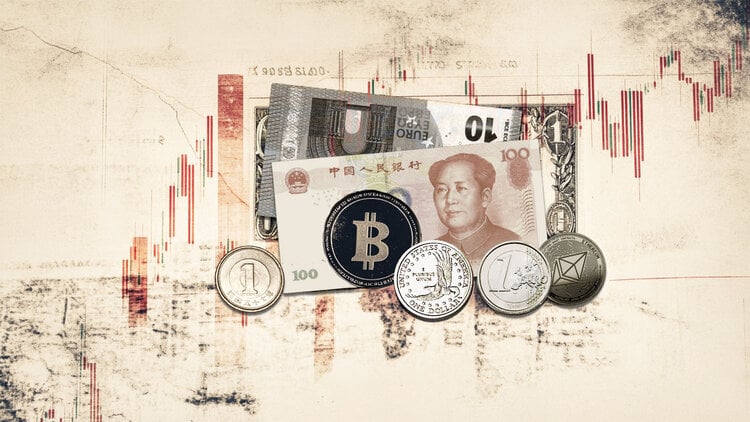- EUR/USD is trading in a bearish bias near 1.0885 during the early Asian session on Monday.
- US PPI inflation rose faster than expected in June.
- Political violence in the US over the weekend boosts the safe-haven dollar.
The EUR/USD pair attracts some sellers around 1.0885 during the early Asian session on Monday. The major pair turns lower amid risk aversion, triggering a fresh bid in the US Dollar (USD). Eurozone Industrial Production for May, New York Empire State Manufacturing Index for July are due for release on Monday, along with Federal Reserve (Fed) Mary Daly’s speech.
US wholesale inflation, as measured by the Producer Price Index (PPI), rose to 2.6% year-on-year in June from a revised reading of 2.4% in the previous reading, above the consensus of 2.3%. The core PPI rose 3.0% year-on-year, beating the 2.5% expected. However, attention remains focused on the recent lower inflation of the Consumer Price Index (CPI), which raised expectations for a rate cut.
Additionally, the University of Michigan’s Consumer Sentiment Index survey fell to 66.0 in July from 68.2 in June, the lowest level in seven months, falling short of the expected increase to 68.5. The University of Michigan’s 5-year consumer inflation expectations declined slightly in July to 2.9% from the previous reading of 3.0%.
Fitch analysts said the Federal Open Market Committee (FOMC) could cut interest rates sooner rather than later, citing potential concerns at the Federal Reserve about the labor market. The Fed will be concerned about further weakness in the labor market going forward.
Political violence in the US over the weekend has boosted a safe haven currency like the Dollar and created a headwind for EUR/USD. During the rally in Butler, Pennsylvania, on Saturday, former President Donald Trump was injured in an assassination attempt. One spectator died in the attack, two others were seriously injured, and Trump was photographed with blood coming out of his ear, according to the BBC.
On the Euro front, officials anticipate price pressures to remain close to their current levels throughout the year, dampening expectations for further rate cuts from the European Central Bank (ECB). ECB President Christine Lagarde emphasized her cautious approach this month, saying, “The strong labor market means we can take time to gather new information, but we must also bear in mind that the outlook for growth remains uncertain.”
Euro FAQs
The Euro is the currency of the 20 European Union countries that belong to the Eurozone. It is the second most traded currency in the world, behind the US Dollar. In 2022, it accounted for 31% of all foreign exchange transactions, with an average daily volume of over $2.2 trillion per day. EUR/USD is the most traded currency pair in the world, accounting for an estimated 30% of all transactions, followed by EUR/JPY (4%), EUR/GBP (3%) and EUR/AUD (2%).
The European Central Bank (ECB), based in Frankfurt, Germany, is the reserve bank of the Eurozone. The ECB sets interest rates and manages monetary policy. The ECB’s main mandate is to maintain price stability, which means controlling inflation or stimulating growth. Its main instrument is to raise or lower interest rates. Relatively high interest rates – or the expectation of higher rates – generally benefit the Euro and vice versa. The Governing Council of the ECB takes monetary policy decisions at meetings held eight times a year. Decisions are taken by the heads of the national banks of the Eurozone and six permanent members, including ECB President Christine Lagarde.
Eurozone inflation data, as measured by the Harmonized Index of Consumer Prices (HICP), is an important econometric data point for the euro. If inflation rises more than expected, especially if it exceeds the ECB’s 2% target, the ECB is forced to raise interest rates to bring inflation back under control. Relatively high interest rates compared to their peers usually benefit the euro, as it makes the region more attractive as a place for global investors to park their money.
Data releases measure the health of the economy and can influence the Euro. Indicators such as GDP, manufacturing and services PMIs, employment and consumer sentiment surveys can influence the direction of the single currency. A strong economy is good for the Euro. Not only does it attract more foreign investment, but it can encourage the ECB to raise interest rates, which will directly strengthen the Euro. Conversely, if economic data is weak, the Euro is likely to fall. Economic data from the four largest Eurozone economies (Germany, France, Italy and Spain) are especially significant, as they account for 75% of the Eurozone economy.
Another important output for the euro is the trade balance. This indicator measures the difference between what a country earns from its exports and what it spends on imports during a given period. If a country produces highly sought-after export products, its currency will appreciate due to the additional demand created by foreign buyers who wish to purchase these goods. Therefore, a positive net trade balance strengthens a currency and vice versa for a negative balance.
Source: Fx Street
I am Joshua Winder, a senior-level journalist and editor at World Stock Market. I specialize in covering news related to the stock market and economic trends. With more than 8 years of experience in this field, I have become an expert in financial reporting.







